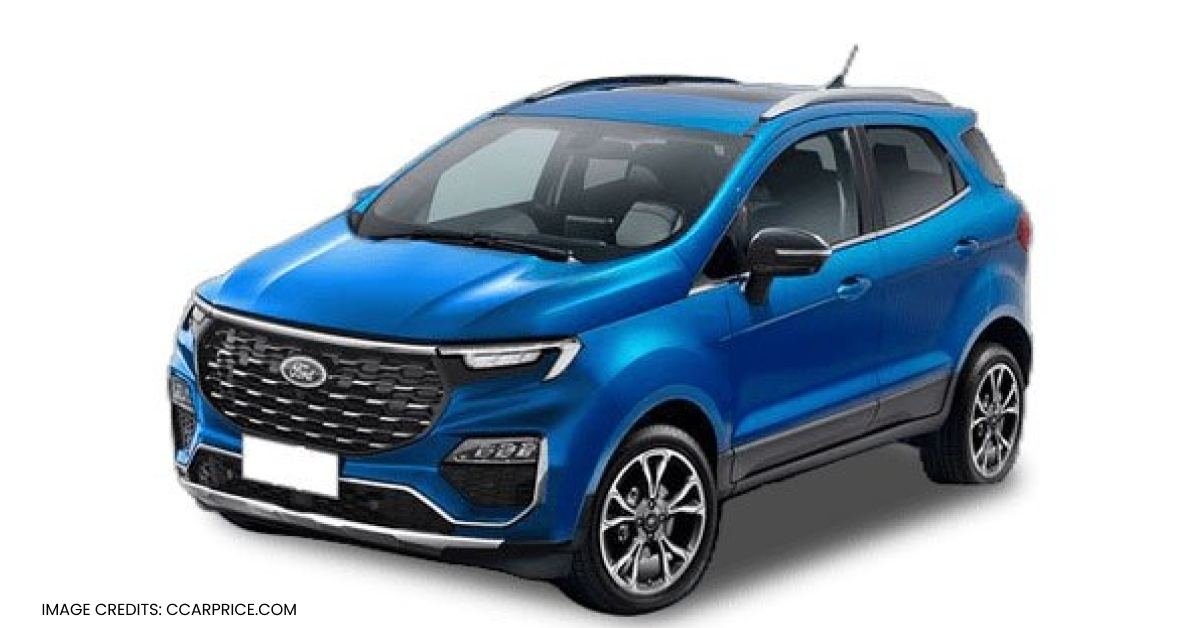-
What is ABS?What is ABS?
-
Importance of ABSImportance of ABS
-
Types of ABSTypes of ABS
-
How Anti-lock Brakes Works in carHow Anti-lock Brakes Works in car
-
How ABS WorksHow ABS Works
-
ABS Components & FunctionsABS Components & Functions
-
Benefits of ABSBenefits of ABS
It’s more challenging to stop a car suddenly when the road is wet. Anti-lock braking systems (ABS) make this sometimes-nerve-wracking event a lot easier. Even the best drivers can only control as soon on slippery roads with ABS as the normal driver can. Anti-lock braking systems are the penultimate topic in this six-part brake series. We’ll discuss why you need them, what’s in them, how they function, common types, and difficulties.
What does ABS stand for?
ABS stands for the anti-lock-stopping system. It’s a precautionary measure that prevents skidding when the brakes are used. This keeps the car from skidding.
ABS is made up of computer sensors and solenoid valves that keep track of how fast each wheel is going. The ABS detects when the wheels are ready to lock up during an emergency stop and applies just enough braking pressure to prevent the wheels from locking up. The ABS makes it simpler for the driver to keep control of the vehicle by adjusting the brake pressure.
Drivers may lose control of their wheels if ABS wasn’t there, causing their automobiles to skid and perhaps tip over. When there is loose dirt or a slippery surface, ABS is especially important for controlling the speed of the wheels. A car’s ability to stop fast isn’t always made easier by ABS, though. A car with ABS will often stop more quickly than one without it. But on surfaces that are slippery, ABS that is turned on by hard braking may make stops take longer while letting drivers keep control of the steering.
Why is it important to have an Anti-lock Braking System (ABS)?
ABS is a very important safety function that every car should have. You never know what will come around the next corner on Indian roadways. Therefore, you should constantly be prepared to move aside, and the Anti-lock Braking System makes this possible. Here are a few examples of how crucial ABS is.
When you use heavy braking, it prevents your vehicle from spinning. So you can safely stop the car even in dangerous conditions.
ABS also makes it easier to stop quickly. so that you may take control of the vehicle sooner, which is crucial in an emergency.
Inclement weather makes it useful. It facilitates safe stopping on slick, icy, or rainy roadways.
Last but not least, ABS can shield you from a fatal collision. Thus, if your car’s anti-lock braking system is malfunctioning, pay attention. Fix ABS issues immediately.
Kinds of ABS:
Three basic kinds of brakes don’t lock up.
Four-channel, four-camera ABS:
Each wheel in this system has its speed monitor and valve. It is the best system because it monitors each wheel and ensures the most braking power is used. The ABS will only buzz on the one-wheel about to lock up. This gives drivers better control over grip.
ABS with three channels and three sensors:
This is how pickup trucks with four-wheel ABS are set up. Both front wheels in this setup have valves and speed sensors. The back wheels share a valve and a speed gauge in the rear axle. Since the back wheels are watched together, both must lock up for ABS to work.
One channel, one sensor ABS:
This system has one valve and one-speed gauge, both in the rear axle. Together, they keep track of all four wheels. Most pickup trucks with ABS on the back wheels have it.
How do cars' anti-lock brakes work?
You already know what happens when you hit the brakes hard in fear or emergency. When you push hard on the brake pedal, the brakes are applied quickly, and the tyres lose grip and stop turning. This is called the “lockup” of the wheels. The ABS’s function is to stop this from happening and enable safe vehicle stopping.
You must be aware of the basic components of an ABS in order to comprehend how it functions. The Anti-skid braking device is made up of four main parts. They are wheel speed monitors, pressure release valves, a hydraulic motor, and a controller or ECU (Electronic Control Unit).
In simple words, threshold braking is the idea behind how ABS works. In car racing, “threshold braking” refers to adjusting brake pedal force. Release the brake pedal until the wheel slides, then reapply until it stabilises. But the ABS does it all by itself.
Look over the following points to learn how the Anti-lock Braking System works.
- The wheel speed gauges keep track of how fast each wheel is going.
- When your car’s wheels lock up, the sensors pick up on the quick change in speed and tell the controller.
- The processor sees the signal as a wheel lock and tells the hydraulic motor to stop applying pressure to the brakes.
- Pressure-release valves are used to lower the pressure on the brakes.
- The wheels start moving as soon as the stop pressure is released.
- Once that happens, the speed sensors take over and send another signal to the processor.
- This time, the processor tells the pump to close the pressure-release valve. This keeps the brake pressure from dropping and makes the brakes work harder.
- Repeating this process until all four wheels eventually come to a stop causes the vehicle to go to a complete stop.
People can do the same thing, and ABS is an unnecessary system that makes the car more expensive. A person can adjust the brake pedal, but the response time is too slow to keep the wheels from locking. On the other hand, even a basic Anti-skid Braking System does threshold braking between 15 and 17 times per second. A person could never react that quickly. Hence, ABS comes to your help!
How ABS Does Its Job
Anti-lock brakes are based on a simple idea. The vehicle’s wheels won’t lock up, and you won’t lose control. In general, ABS makes it easier to control a car and creates it easier to stop on dry and slippery surfaces.
A skidding wheel has less grip on the road than a not skidding wheel. This is because the tyre contact patch is moving on the road. For example, if your car is driving on ice, it can’t move forward, and the wheels will keep spinning because there is no grip. This is because the point where the wheel touches the ice is moving.
ABS changes the pressure of the brake fluid, regardless of how hard the brakes are being used, to bring the wheel’s speed back to the minimum slip level needed for the brakes to work best.
Anti-lock braking system elements and functions:
Speed sensors:
A speed monitor is also called an encoder because it can tell how fast or slow the wheel moves. This component utilises a magnetic field, Hall effect sensor, electromagnetic coil, and toothed wheel to transmit a signal. A magnetic field is generated around the sensor while the wheel rotates. A charge is created in the sensor as the magnetic field shifts around it.
The wheel rotates more slowly when in motion, which might lead to false changes in the magnetic field. This made it so that the manager got the wrong information.
Valves:
A valve is a part of the device that keeps the brakes from locking up. The ABS itself handle it, and most systems have three settings. In position 1, the valve is open, which lets the power from the master cylinder go straight to the brake. In position two, the valve closes off the line, so the brake is no longer connected to the master cylinder. When this happens, the air can’t go up any more. When the valve is in the third position, it lets some air off the brake. The anti-lock braking system often has trouble because a valve is jammed.
Controller:
Since the CPU receives data from the speed sensors on each wheel, it functions as an ECU. The driver receives a notification if a wheel stops turning. The ABS modulator, which opens and closes the brake valves, is activated by the controller after it limits the brakes’ force (EBD).
Pump:
The pump’s responsibility is to reintroduce air into the hydraulic brakes after it has been released by the valves. The controller signals the valve to open when the wheel begins to slip. The pump adds the right amount of force back into the system as soon as a valve releases the pressure the driver applies on the brakes. The pump’s status will then be altered by the controller to achieve the proper level of pressure and halt its motion.
What benefits do anti-lock brakes offer?
The following are some advantages of anti-lock brakes:
- Even if you have to stop on ice, oil, or a wet road, ABS prevents the wheels from locking up and skidding.
- By giving the driver total control of the vehicle in such a scenario, the technology will save a life.
- The technology is now required to be installed in every automobile by law because it functions so well. This makes it simple for drivers to obtain affordable insurance for devices that include the system.
- The traction control system in modern ABS allows all four wheels to grip the pavement. The manufacturer can easily carry out both of these tasks as a result.
- When it comes time to sell them, vehicles with anti-lock brake systems are worth more.
Conclusion:
When the brakes are applied firmly at high speeds, ABS plays a significant role in preventing tragic crashes for passengers by preventing the wheels from locking up when the brakes are applied. It has been proven that anti-lock brakes function effectively everywhere. The Indian government has made anti-lock brake systems a requirement because they are important for safety.
Where can you buy Best Auto Spare Parts in Dubai?
Auto Spare Parts are available at different suppliers and dealers of auto spare parts in Dubai. Noorhan is amongst the leading brands that deal with genuine auto spare parts and aftermarket parts for different car brands, including BMW, Mercedes, Audi, Porsche, Honda, Toyota, Nissan, Mazda, Jeep, Ford, and other Japanese, European, American, Korean, luxury cars brand.
If you’re looking to replace your old Auto Spare Parts with high-quality aftermarket parts in Dubai, Noorhan can help you.











